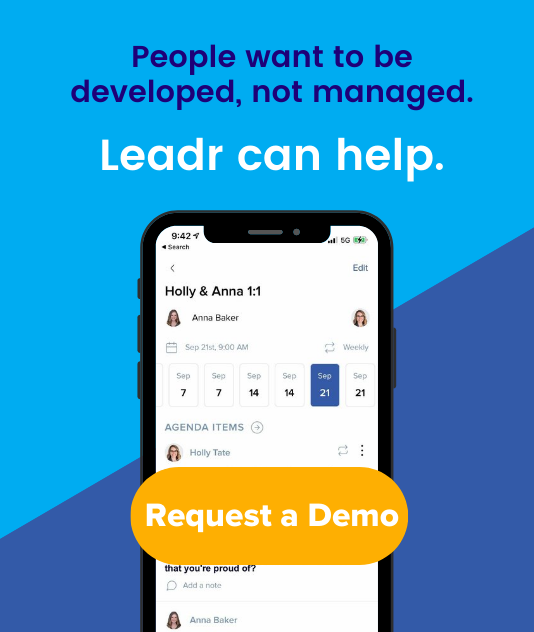So You've Sent Out An Employee Engagement Survey - Now What?
Employee engagement seems to be a crisis in the modern workplace. I’m sure you’ve seen it. The bare minimum effort. The lack of enthusiasm. The frequent absences. These are all signs of disengagement. If you look around your office, chances are that 8-9 out of every 10 people, are not engaged.
This epidemic of disengagement is a problem for employers. However, only 22% of companies know what is driving their employee disengagement.
Many times, when a company scales, culture doesn't. As organizations grow, it becomes more and more difficult for leadership to keep an eye on the health of the culture. They begin to rely on productivity and profitability as measures of engagement and health. But that perspective removes the personal aspect that reflects what employees are actually experiencing.
A study from Gallup highlights this gap, noting that only 24% of employees believe the organization they work for cares about their wellbeing. Is it possible that your people’s experience is different from your perception?
The same study shared that the percentage of American workers who believe that their organization cares about their overall well-being halved between 2020 and 2022, falling from a record high of 49% early in the pandemic to a near-decade low of 24%.
So, why does employee engagement matter?
Let’s take a look at how this gap impacts your bottom line.
In 2021, Gallup found that employees who were not engaged were three times more likely to leave their company than those who were engaged. For each employee lost, the cost to the company ranges between 50%–250% of their annual salary. This doesn’t include the time spent recruiting, hiring, and training a new team member.
Even if turnover is not an issue, disengagement still carries a monetary cost. Gallup estimates the cost of disengagement is 34% of salary. In other words, it costs $3,400 for every $10,000 of salary. When your engagement and organizational culture suffer, your bottom line is impacted.
So, how do we improve employee engagement?
The first step to improving employee engagement is to measure it. For too long, leaders did not have the tools to accurately do this and so were left to make their best guesses.
Not anymore.
Today many companies use employee satisfaction surveys to measure engagement in their organization. With the right questions, leaders can glean valuable data on retention, blindspots, transparency, and growth opportunities that will help to improve the cultural health of their teams. But crafting the right questions can be a bit of a task.
With Leadr Insights, you can take the guesswork out of creating employee engagement surveys and start focusing on the data. Leadr Insights has a list of research-backed questions that you can send to your team with the click of a button.
Asking the right questions is only half the process of measuring employee engagement. The other half is analyzing the data. Just as there are many factors that influence employee engagement, there are many ways to look at the data that you will gather from employee satisfaction surveys.
Retention - At the end of the day, retaining your employees is essential to running your business. Being able to track retention can help you to identify when problems started or make changes before turnover becomes a trend.
Know Where To Grow - Your organization-wide initiatives were designed with the purpose of helping your company grow. Looking at which initiatives are having the most impact and which need to be revisited, will help keep your organization dynamic and responsive to problems as they arise.
Identify Leadership Blindspots - Leadership often has a different perspective on the health of the company’s culture than employees do. Taking time to understand the point of view of an employee can help leaders to identify any blind spots that they need to be more cognizant of moving forward.
Continue What’s Working Well - As important as it is to identify areas where change needs to be made, it is also important to identify the wins. Knowing what is working well can help you create a model for change in problem areas.
Address The Real Problems - It may be obvious that there is a culture problem, but where is it stemming from? Is it felt across all departments, or is it a more isolated problem? Breaking data down by department can help you to find the real problem.
Transparency - Too often, leaders feel that they are communicating with transparency, but team members are still left confused. This confusion often creates distrust and disengagement.
With Leadr Insights, data from employee engagement surveys populates in real-time, allowing you to dig into the results quickly. Data can be broken down by department and team, and results are tracked over time allowing you to see how engagement is trending month-to-month.
So, what happens when employee engagement increases?
Employee engagement has a direct connection to several metrics that are important to your organization: turnover, productivity, and profitability.
- When employees are engaged, organizations see an 18% decrease in turnover.
- Absenteeism decreases by 41%, increasing productivity in engaged teams.
- Highly engaged employees result in a 23% increase in profitability.
Measuring employee engagement, and acting on the results, is an important part of ensuring your organization’s culture is healthy. With the right tools, you can simplify the process and make meaningful changes faster.
Leadr Insights measures employee engagement across your organization so that you can stop creating surveys and start focusing on actually improving culture and employee success.
Request a demo to chat with our team about how Leadr Insights can make your employee engagement surveys simple and actionable.
Share this
You May Also Like
These Related Stories

How Top Organizations Prevent Employee Turnover

Putting Working Genius to Work: Making Your Team & Meetings More Productive






No Comments Yet
Let us know what you think